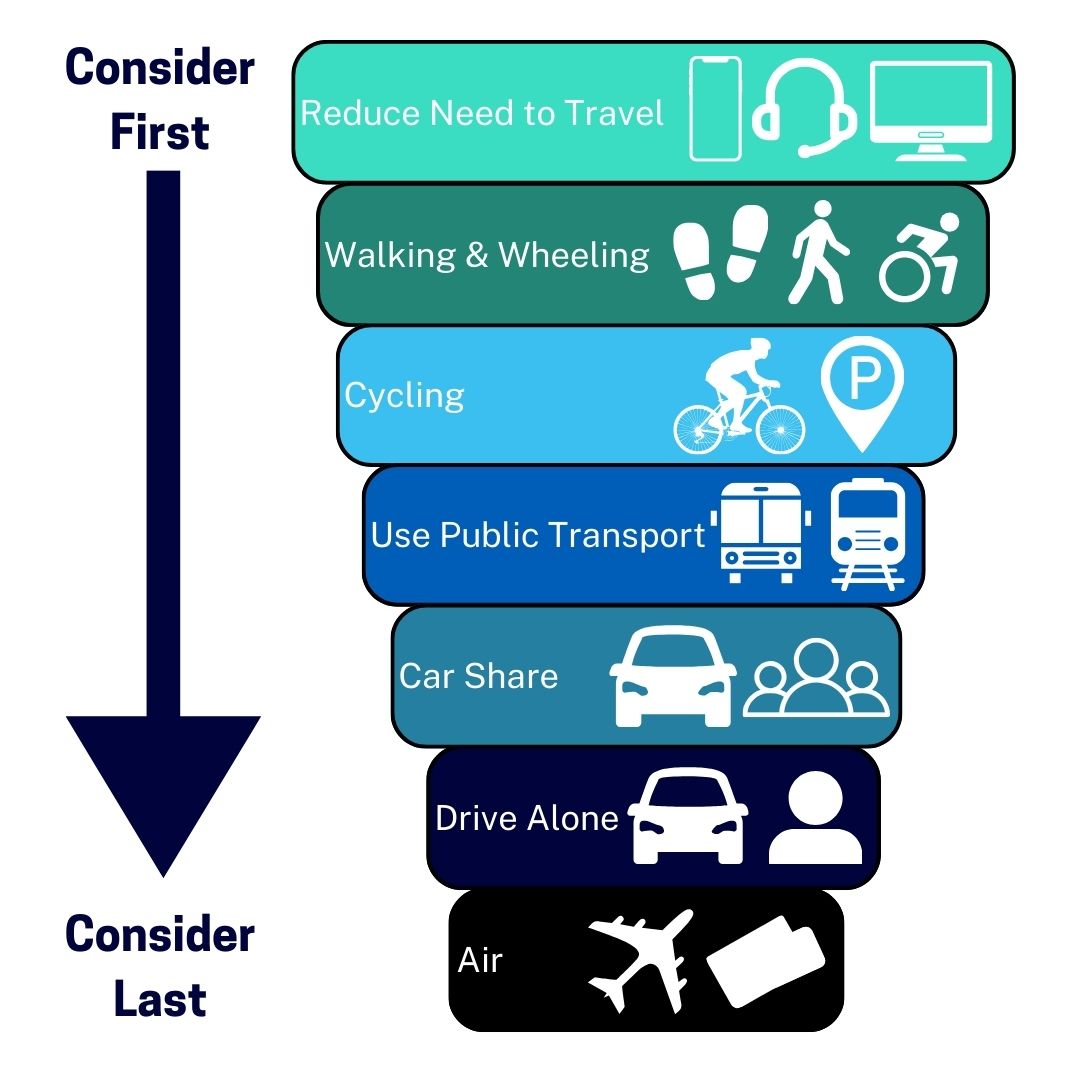The University recognises the need to deliver travel services to enable student and staff to travel safely, efficiently and responsibly between its three main campus sites.
Key highlights
- We operate zero and low carbon buses and coaches.
- We have two fully-electric inter-campus buses - we are one of first universities to offer such a service.
- We have an ambitious target of 50% reduction in business travel carbon by 2027.
- Financial support is available to encourage active and public transport travel for staff and students.
Our Transport Plan provides the context and the approaches being made to enable users to reduce their car dependency, using alternative, healthy and low carbon options. A travel plan aims to reduce car use and increase sustainable modes of transport (walking, cycling and public transport) but the benefits go beyond the environment and extend to health, fitness and wellbeing.
Click here for travel information about how to get to our campuses.
The below travel hierarchy illustrates what questions we need to ask ourselves to identify whether transport is required, and what modes are available. The coronavirus pandemic of 2020 has highlighted the advancing flexibility of technology, and how we can adapt to these changing circumstances whilst enabling studying and work to continue.

The Transport Team undertake research into the commuting habits of staff to better understand modal split and also to help calculate the Scope 3 Carbon emissions from these activities. This is published with the Sustainability Annual Reports and contribute towards our total carbon footprint analysis. Over the past few years we have been working hard to increase alternative options, with decreasing the carbon footprint and utilising innovative new technologies.
Carbon Benefits in Using Our Transport Services
- Avery Hill to Greenwich - by taking our bus service instead of driving you are saving 1.5kg of carbon emissions per journey! It would take a large oak tree 1.5 months to absorb this amount of carbon! Thank you for using these buses. Do not forget that two of these buses are fully electric and we are one of the first institutions providing this service upgrade.
- Avery Hill to Medway - by taking our coach service instead of driving you are saving 5kg of carbon emissions per journey! It would take a large oak tree 5 months to absorb this amount of carbon! Thank you for using these coaches.
- Medway to Greenwich - by taking our coach service instead of driving you are 8kg of carbon emissions per journey! It would take a large oak tree 7 months to absorb this much carbon! Do not forget that two of these coaches are hybrid, saving 5 miles per gallon each journey (13mpg compared to 8mpg under the diesel vehicles).
Assumptions and Calculations of Our Transport Benefits
- Savings calculated for a single bus/coach trip against driving a car alone (route distances are 6 miles Avery Hill to Greenwich; 23 miles Avery Hill to Medway; and 30 miles Medway to Greenwich).
- Car has average UK emissions of 167g of carbon dioxide per kilometre.
- Avery Hill – Greenwich bus is an Optare Metrodecker electric with zero emissions.
- Greenwich – Medway coach is a 57-seat Irizar i4H diesel hybrid, travelling an average of 24 miles per gallon of diesel (average biofuel blend), with an average 75% passenger occupancy.
- Avery Hill – Medway bus is 22-seat Iveco diesel minibus, travelling an average of 20 miles per gallon of diesel (average biofuel blend), with an average 50% passenger occupancy.
- Oak tree average is growing in the British Isles for 50 years measuring 20cm diameter at breast height with average sequestration of 13kg carbon dioxide per year including above and below ground biomass.
- Value based on averaging roughly equal sequestration estimates based on
- i) the National Forest Inventory on carbon stocks (NFI, 2018) where Oak accounts for 31 million tonnes of carbon and 15-20cm is the most common diameter grouping.
- ii) allometric equations from Krejza et al (2017) which relate diameter and height to carbon stocks.
- Assumed tree will reach this at 50 years based on growth curve data published in Short (2013). Many trees will take longer (80-100 years) to accumulate this much carbon.
Sequestration data and calculation provided by Conor Walsh (UoG Natural Resources Institute)
NFI, 2018. Preliminary findings of the extent, composition, health and nature of woodland oak in Britain. National Forest Inventory, Forestry Commission
Krejza, J., Světlík, J. and Bednář, P., 2017. Allometric relationship and biomass expansion factors (BEFs) for above-and below-ground biomass prediction and stem volume estimation for ash (Fraxinus excelsior L.) and oak (Quercus robur L.). Trees, 31, pp.1303-1316.
Short, I., 2013. The potential for using a free-growth system in the rehabilitation of poorly performing pole-stage broadleaf stands. Teagasc.
Innovations at Greenwich
- There is a car share scheme, save money and help the environment. Operated by Liftshare.com with links to University of Kent and Canterbury Christ Church University.
- The University has invested in a range of electrical vehicles and low emission vehicles that you will see around our campuses that help cut carbon and air pollution.
- There are a number of bicycle racks and secure lockers around each campus, making cycling to campus a lot easier.
- Discounted Arriva bus tickets in Medway, to help public transport use and making it more affordable to do so.